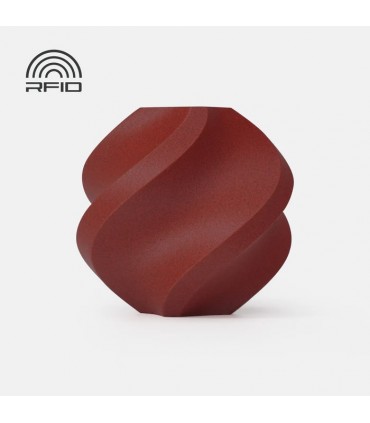Bambu PETG-CF is a composite material consisting of PETG and carbon fiber. The new formula greatly improved printing quality by reducing nozzle clogging and clumping compared to traditional PETG. With the addition of carbon fiber, Bambu PETG-CF offers improved strength while maintaining good toughness and a shiny look. It is an ideal material for drone parts, racing models, and various functional parts that require both high performance, especially impact strength, and a sleek appearance.
Product Features
- Less Clumping and Stringing
- Premium Print Surface
- Improved Mechanical Properties & High Flexibility
- Comes with Basic Reusable Spool
- Diameter: 1.75mm +/- 0.03mm
Cautions for Use
- 0.2 mm Nozzle Not Compatible
- Stainless Steel Nozzle Not Recommended
- Dry before Use for the Highest Print Quality
- AMS Compatible, AMS lite Not Compatible
Accessory Compatibility
| Recommended | Not Recommended | |
| Build Plate | Engineering Plate, High Temperature Plate or Textured PEI Plate | Cool Plate |
| Hotend | Hardened Steel Nozzle (0.4 / 0.6 / 0.8 mm) | Stainless Steel Nozzle (0.2 / 0.4 mm) |
| Glue | Bambu Liquid Glue Glue Stick |
/ |
| Physical Properties | |
| Density | 1.25 g/cm³ |
| Vicat Softening Temperature | 85 °C |
| Heat Deflection Temperature | 74 °C |
| Melting Temperature | 225 °C |
| Melt Index | 19.3 ± 2.4 g/10 min |
| Tensile Strength | 35 ± 5 MPa |
| Breaking Elongation Rate | 10.4 ± 0.6 % |
| Bending Modulus | 2910 ± 260 MPa |
| Bending Strength | 70 ± 5 MPa |
| Impact Strength | 41.2 ± 2.6 kJ/m² |
| Drying Settings (Blast Drying Oven) | 65 °C,8 h |
| Printing and Keeping Container's Humidity | < 20% RH (Sealed, with Desiccant) |
| Nozzle Temperature | 240 - 270 °C |
| Bed Temperature (with Glue) | 65 - 75 °C |
| Printing Speed | < 200 mm/s |
Printing Tips
• Bambu PETG-CF needs proper drying before printing. Drying conditions: 65℃ for 8 hrs. Store in a dry environment after use. Dry before use if the material absorbs moisture. For more details please refer to: Filament drying instructions on WIKI.
• To get stronger Z-adhesion, please set a higher infill density, and do not use an open-frame printer or set too large fan percentages to avoid over cooling.
• To get shinier looks, set lower speeds and relatively higher temperatures.










